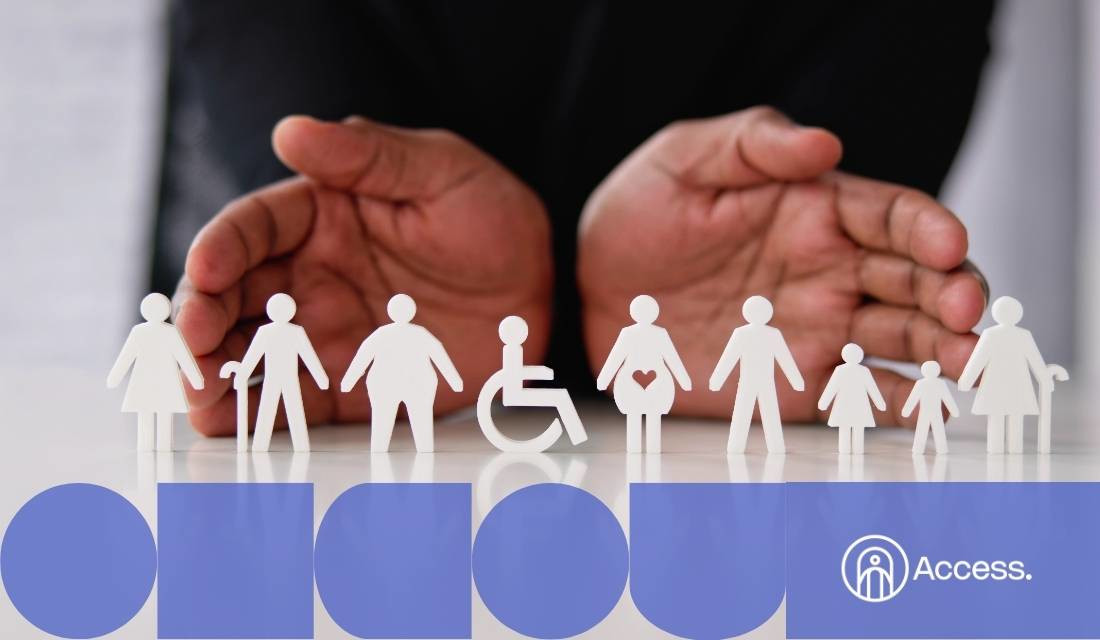Embracing diversity and inclusion in the workplace is more than a moral imperative; it’s a strategic advantage. As organizations globally recognize the value of a diverse workforce, the focus shifts to how we can cultivate an environment that celebrates differences and fosters a sense of belonging.
Within the fabric of modern businesses, Diversity and Inclusion (D&I) are not just buzzwords but foundational elements that drive innovation, employee engagement, and economic growth. Let’s delve into what makes D&I essential in today’s workplace.
Diversity and Inclusion: Why Are They Important in the Workplace?
At its core, diversity refers to the mix of individuals from various backgrounds, while inclusion is about ensuring everyone’s voice is heard and valued. Together, they form a powerful duo that enhances company culture and reflects the multifaceted world we live in.
Organizations with diverse teams benefit from varied perspectives, leading to creative solutions and decision-making. But without inclusion, diversity alone can falter. Inclusion is the key that unlocks diversity’s potential, paving the way for genuine collaboration and mutual respect.
Moreover, the global marketplace is diverse. A workplace that mirrors this diversity can better understand and serve its clientele, leading to improved customer satisfaction and loyalty. Inclusivity goes a long way in making employees feel at home, thus reducing turnover and fostering a positive company reputation.
In the age of social media and corporate transparency, a commitment to D&I can significantly enhance or harm a company’s brand. Potential employees and customers alike often choose to associate with companies that prioritize these values.
Finally, inclusive workplaces are more likely to attract top talent, as professionals seek out environments where they can thrive regardless of their background. This competitive edge is invaluable in today’s fast-paced business environment.
What Are the Benefits of Diversity and Inclusion in the Workplace?
The advantages of fostering a diverse and inclusive work environment are multifold. From a business standpoint, diverse teams are more innovative and better at problem-solving, as they bring a range of experiences and ideas to the table.
Employees in inclusive workplaces report higher job satisfaction and engagement, leading to increased productivity. This positive morale often translates to better customer service and higher profits.

Moreover, companies that prioritize D&I are seen as more socially responsible, which is increasingly important to both consumers and potential hires. This goodwill can translate into a stronger brand and enhanced company loyalty.
- Diversity drives innovation and creativity.
- Inclusion leads to higher employee engagement and retention.
- Companies with a strong D&I policy are seen as better corporate citizens.
- Diverse and inclusive companies outperform their peers financially.
How Can Companies Promote Diversity and Inclusion in the Workplace?
To promote D&I, companies must be intentional and strategic. It starts with leadership commitment and must be woven into every aspect of the organization, from hiring practices to day-to-day operations.
Training is essential in helping employees understand the importance of D&I, recognize unconscious biases, and learn how to foster an inclusive environment. Additionally, mentorship programs can support underrepresented groups in their professional development and advancement.
Another critical step is to ensure that hiring and promotional practices are free from bias and focused on creating a diverse workforce at every level, including leadership positions.
Regularly assessing company culture and seeking feedback from employees can help identify areas for improvement. Celebrating cultural events and creating resource groups can also nurture an inclusive environment.
Finally, transparency in D&I initiatives and progress helps hold the company accountable and shows a tangible commitment to these values.
What Is the Difference Between Diversity and Inclusion in the Workplace?
Diversity is about representation across different demographics, whereas inclusion is about how well the contributions, presence, and perspectives of different groups are valued and integrated into an environment.
 How to lead your work team?
How to lead your work team?An organization can be diverse but not inclusive if it does not foster a culture where everyone feels they belong. On the other hand, an inclusive workplace can only thrive with a diverse group of employees whose unique perspectives are harnessed.
To put it simply, diversity is the mix, and inclusion is making the mix work. Both are necessary for a healthy workplace dynamic and are mutually reinforcing.

What Are the Different Types of Diversity in the Workplace?
Diversity in the workplace encompasses a broad spectrum of differences, including but not limited to:
- Racial and ethnic diversity
- Gender and sexual orientation
- Age and generational diversity
- Disability and neurodiversity
- Educational and socioeconomic background
- Cultural and religious diversity
Understanding and valuing all forms of diversity is crucial to building a truly inclusive workplace.
How Does Leadership Impact Diversity and Inclusion in the Workplace?
Leadership sets the tone for an organization’s commitment to D&I. Leaders who actively champion diversity and inclusion initiatives inspire others to follow suit and contribute to a culture of respect and equity.
Leaders have the power to enact policies and practices that support D&I, and they are responsible for holding the organization accountable to its goals. They can also serve as role models, promoting diversity in their hiring choices and encouraging inclusive behavior among their teams.
Effective leaders listen to diverse voices and are open to learning from experiences different from their own. By doing so, they help to create a workplace where everyone feels heard and valued.
Preguntas Frecuentes Sobre Diversidad e Inclusión
How Can We Promote Diversity and Inclusion at Work?
Creating a diverse and inclusive workplace starts with leadership commitment and must be supported by specific policies and practices. This includes implementing bias-free hiring processes, offering diversity training, and providing equal opportunities for growth and development.
Encouraging open dialogue, celebrating cultural events, and establishing employee resource groups are also effective ways to promote inclusivity. It’s crucial to build a culture where every employee feels safe, valued, and heard.
What Are the Benefits of Diversity and Inclusion in the Workplace?
The benefits of diversity and inclusion are vast. They lead to increased creativity, better decision-making, higher employee satisfaction, and improved company performance. Diverse teams can provide a wider range of solutions to problems, leading to innovative products and services.

Additionally, inclusive companies attract top talent and have better customer alignment. This cultural competency allows businesses to operate successfully in a global marketplace.
What Are the Benefits of Diversity in the Workplace?
Diversity brings a wealth of perspectives that can lead to groundbreaking innovations and solutions. It reflects a company’s commitment to representing the society it serves, thereby enhancing its brand reputation and customer base.
With a diverse workforce, companies can cater to a broader market, understand different customer needs, and foster a dynamic work environment that challenges the status quo.
How to Promote Diversity and Inclusion in the Workplace as an Employee?
As an employee, you can advocate for diversity and inclusion by being a proactive ally and standing up against discrimination. Participate in or start mentorship programs to help underrepresented groups advance in their careers.
 Why virtual assistants in Latin America are the best choice for your business
Why virtual assistants in Latin America are the best choice for your businessEngage in open conversations about D&I, attend training sessions, and suggest improvements to company policies. Your active participation contributes to a culture of inclusivity and helps to break down barriers.








